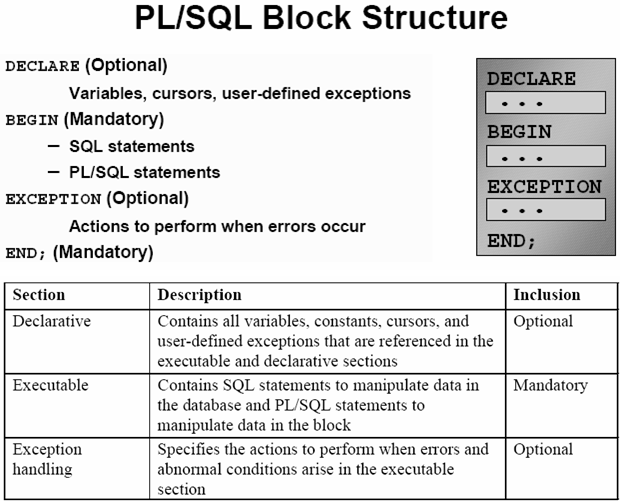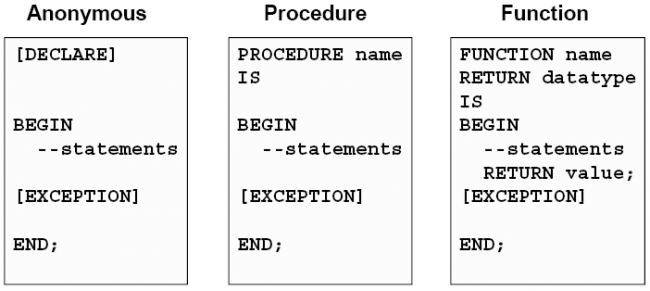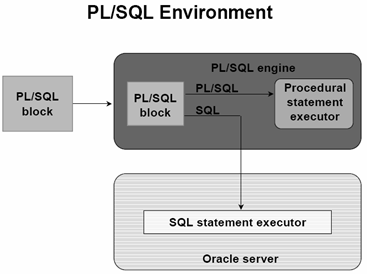A PL/SQL block consists of up to three sections: declarative (optional), executable (required), and exception handling (optional).
Note: In PL/SQL, an error is called an exception.

Executing Statements
DECLARE v_variable VARCHAR2(5);
BEGIN
SELECT column_name INTO v_variable FROM table_name;
EXCEPTION
WHEN exception_name THEN
…
END;
- Place a semicolon (;) at the end of a SQL statement or PL/SQL control statement.
- Section keywords DECLARE, BEGIN, and EXCEPTION are not followed by semicolons. END and all other PL/SQL statements require a semicolon to terminate the statement.
Block Types
A PL/SQL program comprises one or more blocks. These blocks can be entirely separate or nested one within another. The basic units (procedures and functions, also known as subprograms, and anonymous blocks) that make up a PL/SQL program are logical blocks, which can contain any number of nested subblocks. Therefore, one block can represent a small part of another block, which in turn can be part of the whole unit of code.




Recent Comments